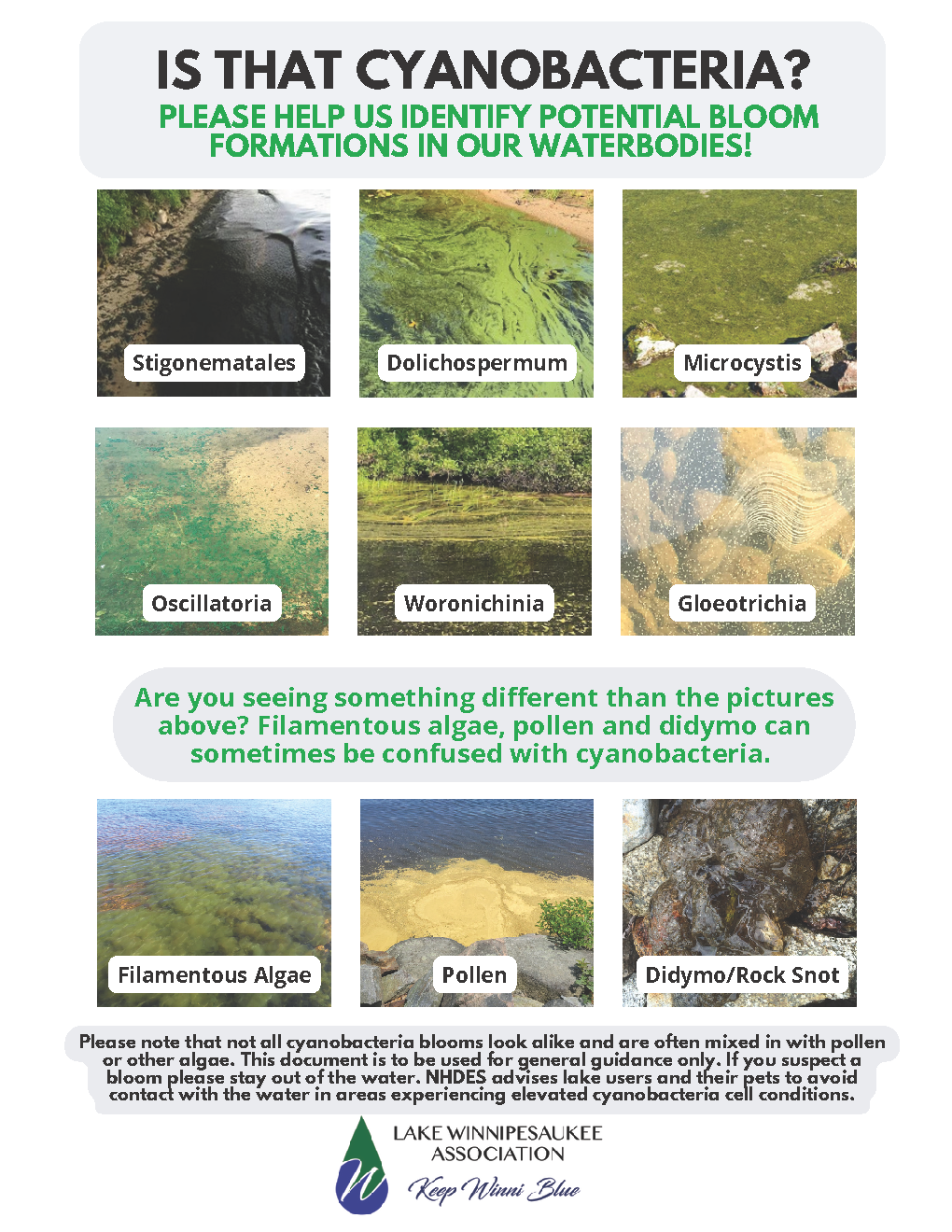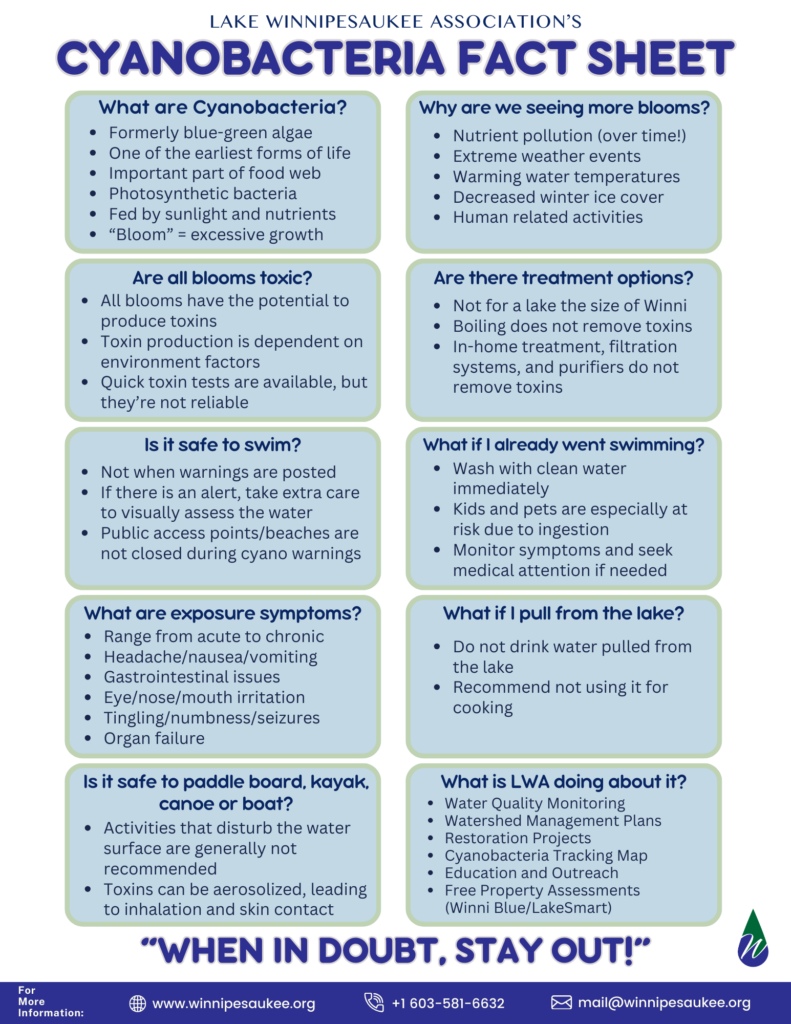Cyanobacteria and Harmful Algal Blooms
Cyanobacteria are natural components of waterbodies and play an important role on our lake systems. The concern is when these cyanobacteria proliferate due to excess nutrients and warm water temperatures to cause blooms. Some cyanobacteria have the ability to produce toxins. Symptoms range from acute health effects such as skin rashes, eye irritation, nausea, headaches and vomiting to chronic effects such as liver and nervous system damage. Kids and pets have a greater risk of toxin exposure due to ingestion. If you suspect that Lake Winnipesaukee is experiencing a cyanobacteria bloom please notify NHDES and LWA immediately.
To Report a Bloom:
Take a picture of the suspected bloom and send it to NHDES and LWA with the date/time/location and your contact information.
- Text/Call NHDES HAB Hotline: (603) 848-8094
- Email: HAB@des.nh.gov
Contact LWA
- Text/Call: (603) 619-8703
- Email: brossiter@winnipesaukee.org
The map below indicates Cyanobacteria observations and advisories in Lake Winnipesaukee from the New Hampshire Department of Environmental Services (NHDES). The report card summarizes key information that can have an influence on cyanobacteria. The report card and map are updated on a weekly basis during the summer season. The report card is updated from May to October.
We are currently tracking several locations on Lake Winnipesaukee where cyanobacteria blooms are present. Updated information will be available shortly!
NHDES advises that if a person of animal is sick from suspected cyanobacteria exposure, to seek medical attention and inform your physician or veterinarian that you or your pet may have been exposed to toxic cyanobacteria while recreating. Fill out the NHDES Illness Report Form and see the CDC guidance for Health Care providers and Veterinarians.
Plan Ahead Before Venturing Out!
- NHDES Healthy Swimming Mapper
- NHDES Waterbody-Specific Cyano Updates
- Sign Up for Weekly NHDES Updates
- Sign Up for LWA Updates
Because bloom conditions can change rapidly and move around in a waterbody, it is important to perform your own self risk assessment prior to jumping in.
Is that cyanobacteria? LWA has created this guidance document to assist people with identifying potential bloom formations in our lakes. Please note that not all cyanobacteria blooms look alike and are often mixed in with pollen or other algae. This document is to be used for general guidance only. If you suspect a bloom, please stay out of the water. NHDES advises lake user and their pets to avoid contact with the water in areas experiencing elevated cyanobacteria cell conditions.
Please note that the map is meant to be used as an informational tool with approximate locations of cyanobacteria warnings (previously advisories) and sightings.
2024 Bloom History
June 12 to 26: View Map of Removed Warnings and Observations
Historical Bloom Information
View a List of Observations and Advisories (2023)
View a List of Observations and Advisories (2022)
View a List of Observations and Advisories (2019-2021)
Additional Information

